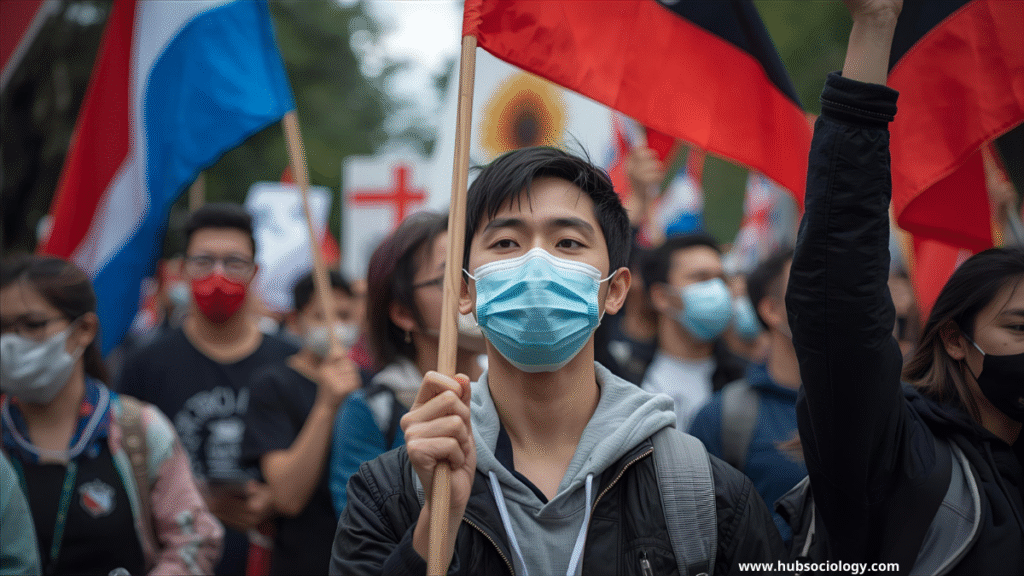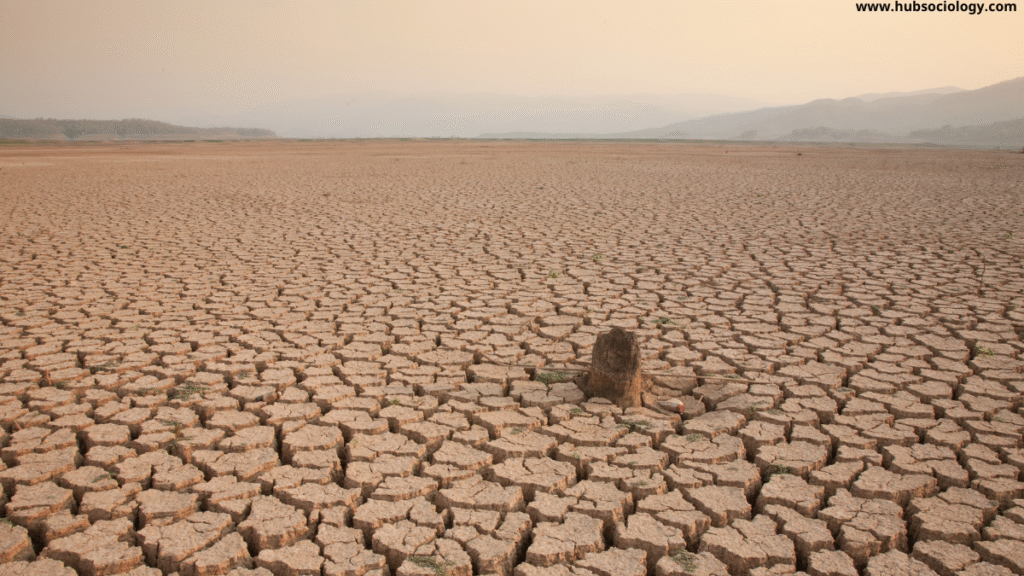Introduction
In the contemporary world, globalization has interconnected societies, economies, and cultures at an unprecedented scale. Yet, alongside its promises of growth and development, globalization has deepened inequalities across the globe. The widening gap between wealthy and poor nations, as well as disparities within societies, exposes marginalized populations to heightened risks and vulnerabilities. The phrase “global inequality, local vulnerability” captures this paradox: global structures of wealth and power generate inequalities that translate into specific vulnerabilities in local communities. From poverty and food insecurity to climate change impacts and health crises, local experiences of hardship often stem from larger global imbalances. A sociological analysis allows us to examine how structural inequalities, social institutions, and power relations reproduce these vulnerabilities.
Understanding Global Inequality
Global inequality refers to the uneven distribution of resources, wealth, opportunities, and power across the world. It is visible in several dimensions:

- Economic Inequality – A few high-income countries control the majority of global wealth, while low-income countries struggle with underdevelopment. For instance, multinational corporations based in the Global North dominate global trade and extract resources from the Global South.
- Technological Inequality – The “digital divide” limits access to education, jobs, and healthcare for communities lacking internet and technology infrastructure.
- Health Inequality – Access to healthcare, medicine, and nutrition varies dramatically between regions. The COVID-19 pandemic revealed how vaccine access was skewed toward wealthier nations, leaving poorer ones more vulnerable.
- Environmental Inequality – Industrialized countries contribute disproportionately to climate change, while vulnerable communities in developing nations suffer the harshest consequences such as floods, droughts, and rising sea levels.
Sociologists highlight that these inequalities are not natural but socially constructed and maintained by global institutions, policies, and histories of colonialism and imperialism.
Linking Global Inequality to Local Vulnerability
Local vulnerability refers to the susceptibility of specific communities or groups to harm, loss, or disadvantage due to external pressures and internal weaknesses. These vulnerabilities are often shaped by global inequalities. For example:
- A farmer in Bangladesh faces rising sea levels caused largely by carbon emissions from industrialized nations.
- Workers in Southeast Asia labor in unsafe conditions to produce cheap goods for Western consumers.
- Indigenous communities in Latin America lose land to multinational mining corporations.
Thus, global structures of inequality produce localized experiences of insecurity. Vulnerability is never just about geography; it is deeply intertwined with social class, gender, ethnicity, and other markers of identity.
Theoretical Perspectives
- World-Systems Theory (Immanuel Wallerstein)
According to world-systems theory, the global economy is structured into “core,” “semi-periphery,” and “periphery” nations. Core nations exploit peripheral nations for cheap labor and raw materials, perpetuating underdevelopment and vulnerability in the latter. For instance, African nations rich in natural resources often experience poverty and instability due to exploitative global trade relations. - Dependency Theory
This perspective argues that underdevelopment in the Global South is not due to internal deficiencies but because of structural dependence on the Global North. This dependency manifests in debt traps, foreign aid with conditionalities, and trade imbalances, which increase local vulnerability. - Structural Violence (Johan Galtung)
Structural violence refers to the systemic inequalities built into social structures that harm individuals and communities by denying them basic needs. For example, when pharmaceutical companies prioritize profits over accessibility, marginalized populations face higher mortality rates. - Risk Society (Ulrich Beck)
Beck’s idea of the “risk society” emphasizes that modern global risks—like climate change, pandemics, and nuclear threats—are unequally distributed. While risks are global, their consequences are experienced locally, and poorer communities lack resources to adapt or recover.
Dimensions of Local Vulnerability
- Economic Vulnerability
Global financial crises disproportionately harm local economies. For instance, the 2008 global recession triggered job losses and wage cuts in developing nations, while wealthy countries had more capacity to recover. - Social Vulnerability
Marginalized groups—women, children, minorities, and migrants—are most affected by global inequalities. Gendered divisions of labor make women in the Global South more vulnerable to poverty when global industries collapse. - Environmental Vulnerability
Communities dependent on agriculture face severe risks from global climate change. Droughts in sub-Saharan Africa or cyclones in South Asia expose how ecological inequalities translate into local suffering. - Health Vulnerability
Global health inequalities became stark during COVID-19. While developed nations secured vaccines early, poorer countries waited months, causing preventable deaths. Local hospitals lacked infrastructure to handle surges, revealing the interplay of global inequality and local vulnerability.

Case Studies
- Climate Change in the Global South
Small island nations like the Maldives face existential threats due to rising sea levels. Despite contributing negligibly to global carbon emissions, they bear disproportionate costs of adaptation and survival. - Global Supply Chains and Labor Exploitation
In South Asia, garment workers—mostly women—produce clothes for Western brands at extremely low wages under unsafe conditions. The 2013 Rana Plaza collapse in Bangladesh highlighted how global inequality fosters deadly local vulnerabilities. - Food Insecurity in Africa
Despite being resource-rich, African countries face chronic food insecurity due to global trade policies, land grabs by multinational corporations, and export-oriented agricultural systems that neglect local needs.
Coping Mechanisms and Local Agency
While local communities are vulnerable, they are not passive victims. Sociologists emphasize resilience, adaptation, and resistance:
- Community Networks – Informal social support systems help people survive economic shocks.
- Grassroots Movements – Activist groups challenge multinational corporations and advocate for environmental justice.
- Local Innovation – Farmers adopt indigenous knowledge systems to adapt to climate risks.
- Transnational Solidarity – NGOs and social movements build global-local linkages to challenge inequality (e.g., Fair Trade movements).
Addressing the Issue: Toward Global Justice
Reducing global inequality and local vulnerability requires systemic change:
- Reforming Global Institutions – Organizations like the IMF and WTO should prioritize equity over profit-driven models.
- Debt Relief and Fair Trade – Cancelling illegitimate debts and promoting fair trade can empower local economies.
- Climate Justice – Developed nations must take responsibility for emissions, fund adaptation, and support vulnerable countries.
- Healthcare Equity – Universal access to medicines and vaccines should be ensured through global cooperation.
- Empowering Local Voices – Development programs must include local participation to avoid top-down exploitation.
Conclusion
The sociological lens reveals that global inequality and local vulnerability are not isolated phenomena but interconnected realities. The inequalities generated by global systems of power, economy, and politics create vulnerabilities that manifest in specific communities across the world. Whether through environmental disasters, economic crises, or health emergencies, it is the marginalized who face the gravest consequences.

Addressing this paradox requires not just technical solutions but a commitment to social justice, equity, and solidarity at both global and local levels. By reimagining global cooperation and strengthening local resilience, societies can work toward reducing the divide that sustains inequality and vulnerability.
Do you like this this Article ? You Can follow as on :-
Facebook – https://www.facebook.com/hubsociology
Whatsapp Channel – https://whatsapp.com/channel/0029Vb6D8vGKWEKpJpu5QP0O
Gmail – hubsociology@gmail.com
Exam-style questions
5 Marks Questions (Short Answer)
- Define global inequality with examples.
- What is meant by local vulnerability in sociology?
- Mention two examples of how global inequality affects health vulnerability.
- Explain the concept of structural violence (Galtung) with reference to global inequality.
- State two ways climate change creates local vulnerability in the Global South.
10 Marks Questions (Medium Answer)
- Explain how World-Systems Theory helps us understand global inequality and local vulnerability.
- Discuss the impact of global supply chains on local labor exploitation with a suitable example.
- How did the COVID-19 pandemic highlight the link between global inequality and local vulnerability?
- Describe the relationship between environmental inequality and local vulnerability with reference to climate change.
- Examine the role of grassroots movements and local agency in reducing vulnerabilities created by global inequalities.
15 Marks Questions (Long Answer/Essay Type)
- “Global inequality produces local vulnerability.” Discuss this statement with suitable sociological theories and examples.
- Critically evaluate how dependency theory explains the persistence of global inequality and its local consequences.
- Analyze the multiple dimensions of local vulnerability (economic, social, environmental, health) arising from global inequality.
- Discuss the concept of risk society (Ulrich Beck) and its relevance in understanding global risks and local vulnerabilities.
- Suggest sociological strategies to reduce the effects of global inequality on local communities, with examples.
